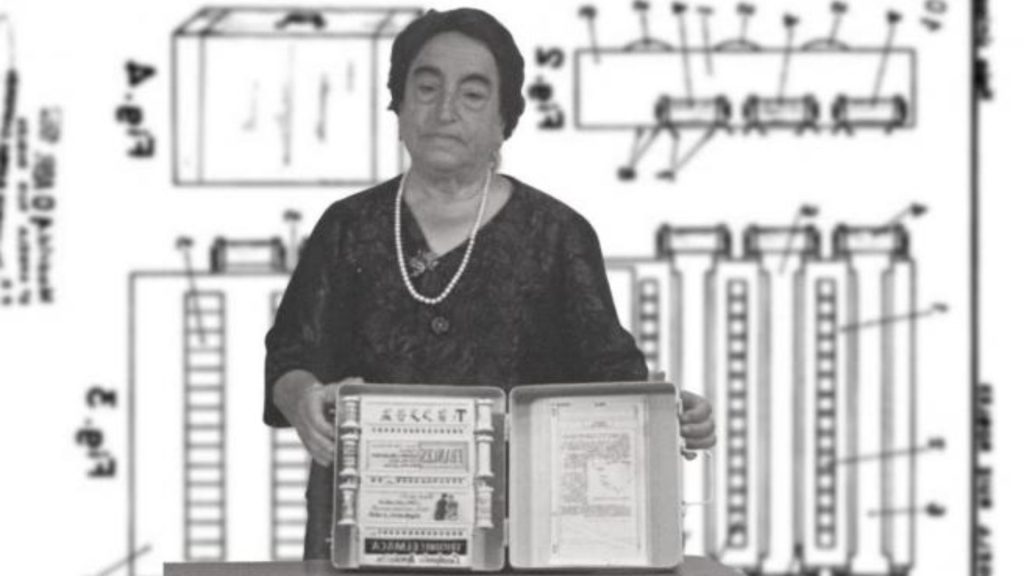Ángela Ruiz Robles, born on March 28, 1895, in Villamanín, León, and passing away on October 27, 1975, in Ferrol, A Coruña, was a Spanish educator, author, and innovator credited with inventing the mechanical precursor to the electronic book.
Her groundbreaking creation predates Michael Hart’s Project Gutenberg by 20 years, establishing her as the true pioneer of e-books, more than half a century ahead of contemporary e-book technology. Ruiz Robles secured two patents for her “Mechanical Encyclopedia” (Spanish: la Enciclopedia Mecánica).
Shifting the focus to the curiosity surrounding Angelica Robles’s husband, this article delves into the details of his life. Additionally, we will explore Angelica Robles’s career and delve into the enduring legacy of her remarkable journey.
Who Is Ángela Ruiz Robles Husband?
Ángela Ruiz Robles married her husband, Andrés Grandal, a merchant seaman, and together they had three daughters—Elena, Elvira, and Maria Carmen. In 1918, a year after her marriage, she relocated to Santa Uxía de Mandiá, a small village near Ferrol, Galicia, where she served as a teacher until 1928. During 1934, she played a crucial role as the manager of the National Girls School Orphanage in Ferrol.

In 1948, Ángela Ruiz Robles commenced her teaching career at the Ibañez Martín School. She eventually assumed the role of director in 1959 and remained in that position until her retirement.
Living through and after Spain’s Civil War, Ángela Ruiz Robles faced a challenging period. In the early 20th century, only 25% of Spanish women were literate, with female illiteracy rates 60% higher than in men. Women were predominantly homemakers, often lacking even basic education. Against this backdrop, Ruiz Robles’ achievements gain heightened significance and deserve recognition.
Ángela Ruiz Robles was widely known and admired for her dedication to her students and her commitment to modernizing outdated teaching methods. Her books, inventions, and career were all geared toward making education accessible, simpler, and enjoyable for diverse students with unique needs.
Also Read: Amy Grant’s Husband: A Closer Look At Her Personal Life
In her leisure time, Doña Angelita conducted free night lessons for those with fewer resources, going above and beyond by visiting her students’ homes to ensure their comprehension of class materials. Ruiz Robles passed away in 1975 in Ferrol, and even until her death, she continued to cover the patent fees for her mechanical book.
Explore The Career And Legacy Of Ángela Ruiz Robles
Between 1938 and 1946, Ángela Ruiz Robles authored 16 books aimed at aiding children’s studies. In 1944, she initiated the Grammatical Scientific Atlas project to enhance nationwide knowledge of grammar, syntax, morphology, orthography, and phonetics. Concurrently, she developed and refined a tachymecanographic machine.

The pivotal year of 1948 marked the patenting of her groundbreaking proposal for the Mechanical Encyclopedia (Spanish patent number 190,698). Ruiz Robles outlined the objectives of her invention: reducing the weight of students’ school bags, enhancing the learning process, and making education more intuitive and enjoyable.
In 1962, she sought a second patent (number 276,346) for a simplified version of her Mechanical Encyclopedia. A prototype was constructed in the same year, composed of bronze, wood, and zinc. Unfortunately, the invention never reached the public due to a lack of funding.
Ángela Ruiz Robles played a multifaceted role as the founder, director, and professor at the Elmaca Adult Academy, named after the initials of her three daughters.
Also Read: Details About Elizabeth Banks’ Husband And Their Relationship
In 1970, she declined a proposal to license her patents in the United States, expressing a strong desire for the development of her invention to occur in Spain, particularly in Ferrol, where it originated. Since 2006, her Mechanical Encyclopedia has been housed in the Pedagogical Museum of Galicia in Santiago de Compostela. In 2012, it was relocated to the National Museum of Science and Technology in A Coruña, Spain, where it remains to this day.

